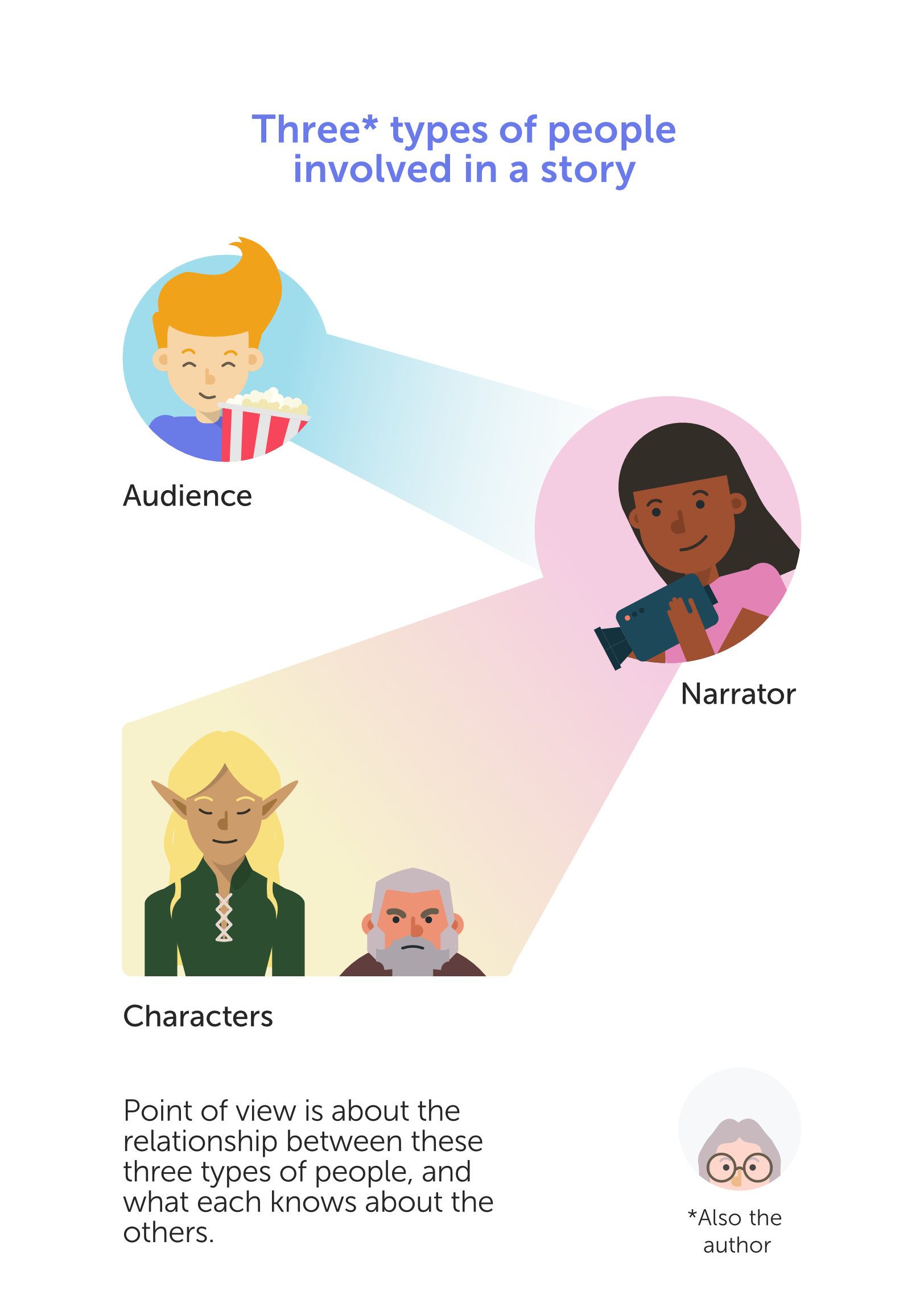Now let's apply that to stories.
In any story, there are three categories of people who can know information about the world of the story:
- Characters in the story
- The narrator
- The audience
In any story, these three entities can know different things.
(Actually, there's also a fourth entity—the author—who may or may not be the narrator, but let's not overcomplicate an already complicated situation.)


